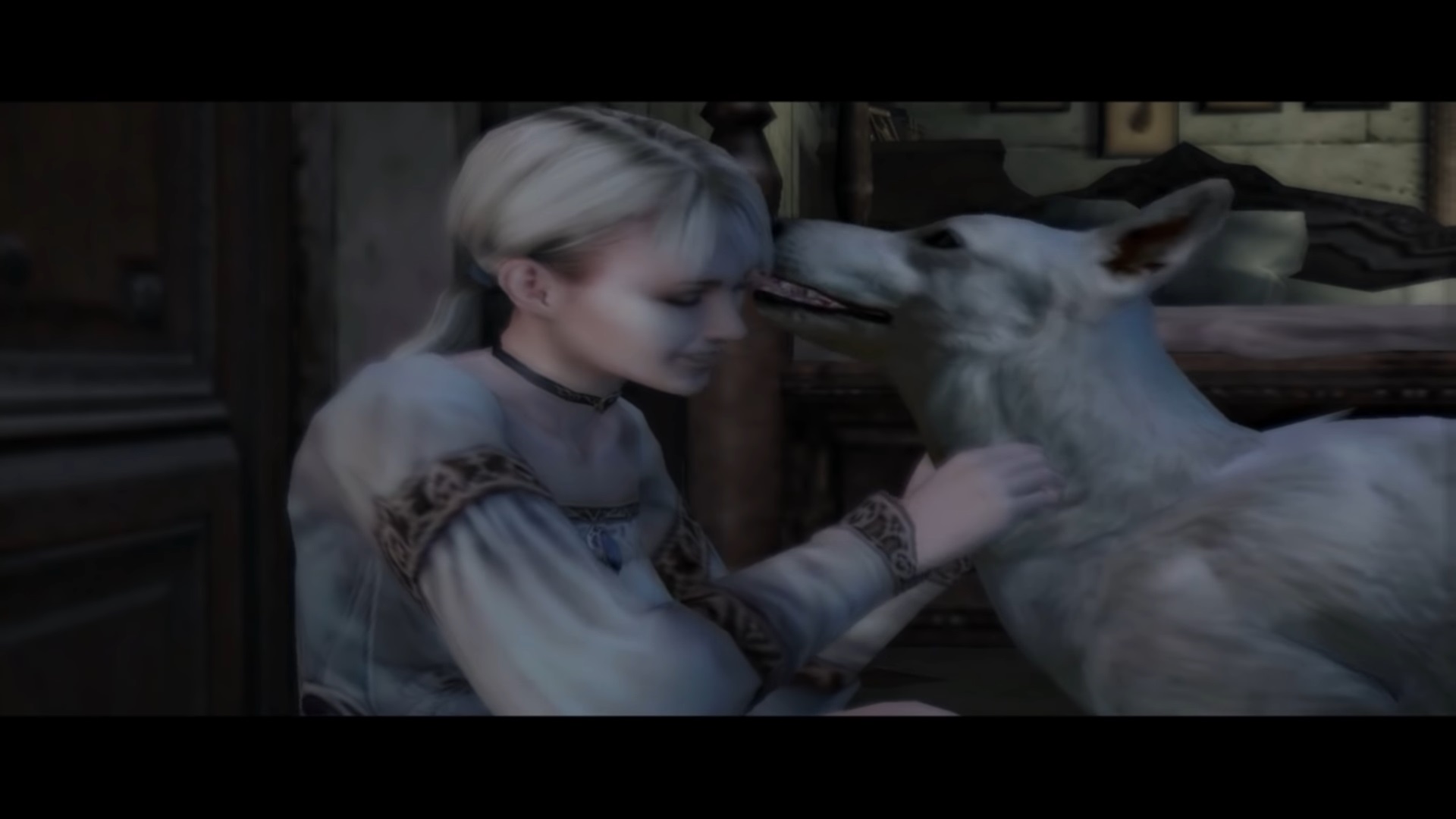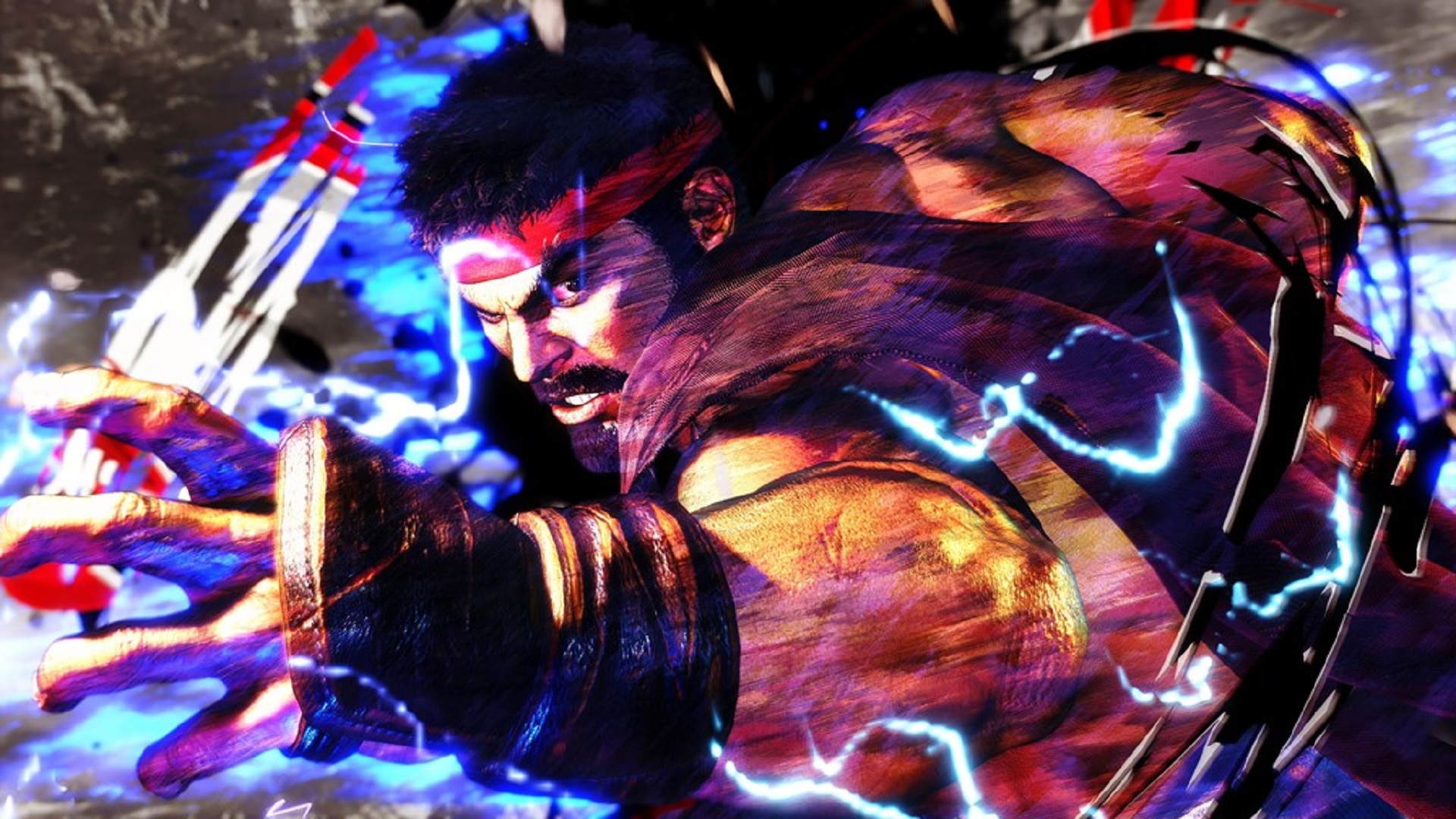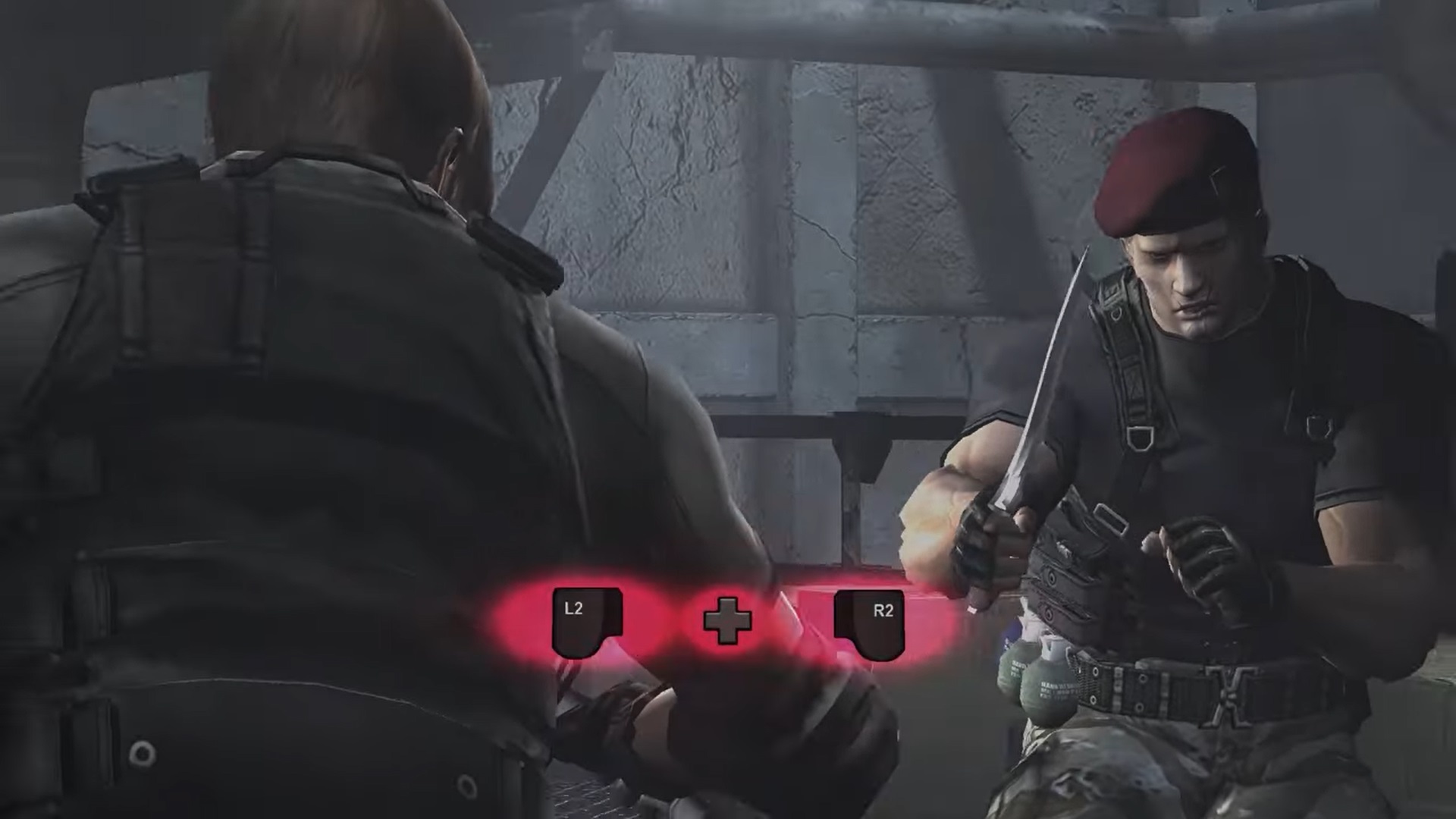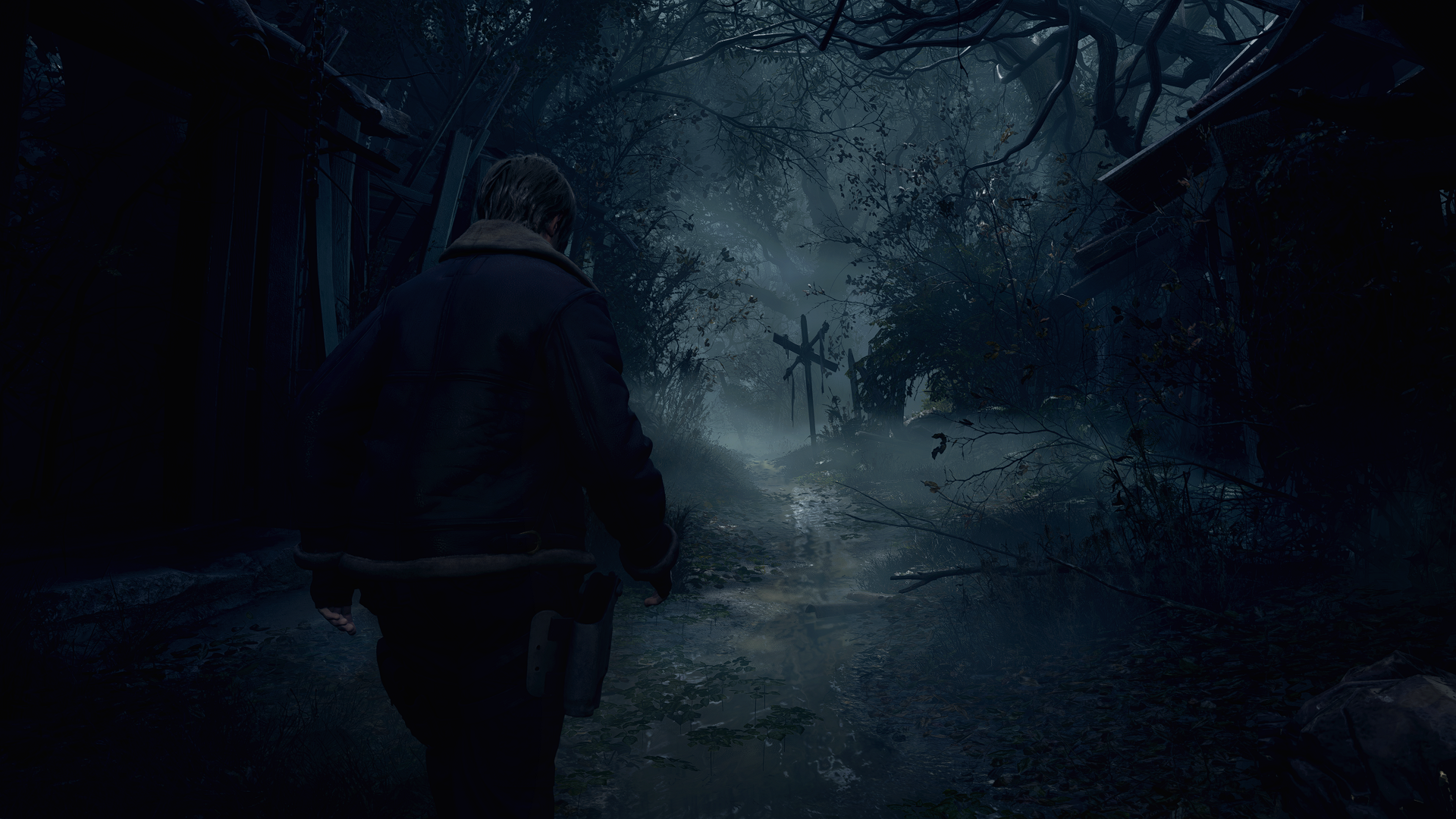
Terrifying Chase – Haunting Ground’s Clever Run-and-Hide Horror
What better way to savor Halloween than with a good horror game that has you running and hiding from monstrous beings? Than to find yourself utterly helpless as you close that closet door or crawl under the bed, praying that thing that’s following you doesn’t find you?
I enjoy horror games that have largely-helpless protagonists – ones where hiding from your enemies, or knowing when to run away as fast as possible, are your only tools of survival. They can get dull at times when you’re hiding in a closet for the tenth time, but there’s something about having no option but escape that makes each encounter so much more frightening. Just because escape is your only option doesn’t mean that a game can’t have many clever systems at work to make fleeing interesting, though, as is showcased by the chilling and compelling Haunting Ground.
Fiona finds herself trapped in a castle filled with increasingly-sketchy people, and isn’t exactly equipped to do much about them besides avoid them. That is, until she runs into Hewie, a heroic dog pal who will save her life dozens of times while also providing an excellent tool for avoiding the doldrums that can come from spending too much time hiding under the bed. Not that he’ll save you all the time, as the game’s variety of dangerous stalkers are persistent and ruthless, and will have your heart racing any time you hear them lumbering nearby.

Haunting Ground uses stalkers throughout the game to give you something to be afraid of. These are violent people who mean to kill you (albeit some only accidentally) or…worse, and they’re very thorough in their search for you. You’ll know that they’re in the area if things get quiet and you start to hear footsteps, or if you catch the background music shifting to that of the stalker (each has their own chilling, discordant tune). It won’t be long before this subtle shift in the music makes your blood run cold, as a tense chase is about to begin.
That musical touch is the first thing the game does to get the heart pounding. The music, for starters, gives the stalkers a dramatic presence when they appear. This can lessen the ability to just stumble across them for a bit jump scare, but in its place, it dials up a creeping dread. The music starts to get quiet. You wonder if your ears are playing a trick on you. Then, you hear thumping footsteps, and your heart starts to beat a bit faster. You hear the stalker’s muttering voice, telling you they’re a short distance away. You want to run, but you’re not sure where. Then, the stalker cries out, footfalls hammering as they come your way as their pounding music surrounds you. It’s delightful in the chaos and panic it sows in your mind, even if you don’t get that big jump from blundering into the monster, but you get a deeply effective sense of rushing dread.
This also comes from the lethality of the stalkers in Haunting Ground, although you don’t always die on contact with these creatures (although boss encounters change this up a bit). Not that this makes them any less dangerous to be around. Instead of having a health bar, Fiona instead takes “Panic” damage from messed up things happening around her, or from being too close to the stalkers. Seeing patches of blood, hearing screams, or several other things will increase her panic (which creates a visual stutter to indicate it is rising), and if it goes too high, she just starts running, with the game’s visuals going blurry and distorted. If she bumps into anything while in this state (which happens often as she’s very hard to control precisely while Panicked), she’ll likely fall, and if a stalker catches you while on the ground, it’s typically Game Over. You can rarely survive this, but I wouldn’t count on it.

Fiona can be killed by traps and enemy contact, but Panic is what will kill her most of the time as you play. Because of this, you rarely die just from having your hiding spot get found while playing through the game, but will get thrown into a terrifying chase as you struggle to avoiding getting knocked over and killed. This allows players to hide out if they so choose, but you don’t die just because your hiding spot gets found. You also don’t die on the spot, instead only after a terrifying chase that comes whether you’ve been hiding or not.
Haunting Ground also offers a fantastic hiding system. You can use closets and beds and the like to hide, but the game’s stalkers have an actual line of sight that they use to seek you out, meaning you can slip behind open doors, sneak behind tall objects, or just stand in shadows and they’ll have a hard time locating you there unless they look right at you. This means you’re not always running for a handful of hiding spots, and it also allows you to do some dynamic hiding where you circle an object or are just behind a door long enough to sneak out while the stalker’s back is turned. It makes hiding feel exciting and involved, rather than just hitting a button to get into a closet and then hoping the killer just goes away.
Another neat element of this is that the stalkers will learn based on what you do. If they catch you hiding behind a door or other object, they will adapt future searches to look in those places. This steadily whittles down your hiding options and adds even more tension when you rush into a room. Luckily, since hiding spots aren’t scripted locations but just any place you can stay out of sight, you still have many ways to stay hidden, but will feel an increased tension as you worry about whether this hiding spot will be found next.

All of this works together to reduce the likelihood that you’ll find a hiding spot and just sit in it. The enemies will likely find you eventually if you keep using a spot, and since you can dynamically hide wherever you want instead of just in closets or under beds, you’ll often be in mostly-unsafe places and have to keep moving. Also, while hiding is still a high-stakes risk, going into a Panic is still a lot easier to deal with than being killed outright, making players more inclined to make a risky maneuver to escape. You won’t necessary die from getting caught, so it’s better to keep moving.
It’s still tense because you’re hiding in hopes that the killer goes away, and you really don’t want to get caught because a Panic state isn’t terribly easy to survive, but you at least have a fighting chance. You can risk escaping your hiding spot and trying to sneak by since you won’t instantly lose if you mess up. There’s a tiny margin of error that encourages you to take risks rather than sit tight, which preserves the tension of hiding while still giving the player the encouragement they need to keep doing stuff and staying on the move in Haunting Ground. You still get that tense fear in hiding, but without the likelihood you’ll get bored sitting in a locker.
Stamina also factors into this tension. Fiona, unlike most video game characters, can’t run forever. She gets tired, her pace slowing if she spends too much time running all over the place (luckily, your stalkers can get worn down, too). This means that there’s no sense in hurrying back to an old hiding spot you know works well (since you probably don’t have the energy to get there), as you’re always exploring the castle, solving puzzles and seeking the way forward. It forces the player to make do with what’s around them (which makes them utilize the dynamic hiding system, and also means they might get caught and have the stalkers learn from them). It also means that each chase with the stalker is a tense one, as if you’ve been running around the castle trying to finish stuff quickly already, then you’re likely starting the encounter tired. No running at a full sprint as much as you like.

This is vital, as it makes the player feel concerned about the stalkers even when they’re not around. Pacing could have been an issue in this game, as tension can dissipate when the enemy isn’t around, leaving the player feeling bored while solving puzzles alone. Haunting Ground, through the stamina system, makes you think about how you would need to react if the enemy showed up an instant later. What are you doing right now that is wasting stamina and potentially putting you in danger? Even if the enemy isn’t around, if you waste energy, you’ll be in a bad state if they show up, forcing you to think about them and worry about them as you consider how you use your stamina. How you act when the enemy isn’t around can affect you when they appear, so your foe is always close in your mind, keeping tension high.
And like I said, music and the sounds that come with an enemy presence go a long way to keeping that pressure up, too. The massive, giggling Debilitas is deeply unsettling to avoid. That child-like joy he expresses is just…a lot to take. The second stalker’s cold manner and distorted, disquieting musical theme make me incredibly uncomfortable every time they’re near (which is great when the game forces you to walk RIGHT UP TO THEM FOR A KEY). As more plot unfolds, the third and fourth stalkers because disturbing to be anywhere near, creating a sickening revulsion in you if they get close. Also, one has a gun, which makes them kind of stressful to be around. Each of their musical tracks adds to this tension around them as well, doing so by indicating how close they are, but also because the tracks are bizarre, distorted, manic, and aggressive, practically forcing the mind and heart into a panicked state.
What ties it all together so well, though, is Hewie, your lovely puppy pal throughout Haunting Ground. Hewie will help you find items you need to progress or stuff that heals panic, sniffing around the environments to find you hidden goodies. He can fiddle with things or hit pressure plates to help you as well. He’s a good boy (that you can, and should, pet frequently), and he’ll make your journey a lot easier if you’re good to him.

More importantly, he’s a handy pal when a stalker is around. Hewie can bark to misdirect stalkers, or can bite them to slow them down (attacking from behind makes this massively more effective). He can hide and help you set up traps for the stalker. He’ll likely save your life countless times. If you’re good to him.
Being able to fight off the stalker with your dog makes it sound less frightening, right? But Hewie isn’t a magic solution to all of your problems in Haunting Ground. Hewie, as a dog you’ve just met, needs a little training. Taking the time to play ball with him or pet him and tell him he’s a good boy will help you bond with him, making him more likely to listen to your commands. If you kick him or scold him often, he’ll stop listening (even turn on you himself if you’re really bad to him, and you utterly deserve it if he does this). But he might also get a little disobedient if you praise him for nothing too much, so don’t expect to game the system with too much petting. So, you need to bond with Hewie to get to a state where you can work together.
Did I mention that making noise makes the stalkers find you faster? Noise like shutting doors, messing with loud puzzles, throwing a ball around, or babbling about what a good dog Hewie is will all make your enemies find you faster. So, to train Hewie enough to help you, you have to take yet another risk.
If he loves you, he can be used to greatly help your journey, which encourages the player to go on the offensive to some degree. You can slow a stalker, or even temporarily knock them unconscious, if you use Hewie well. This might seem to erode tension again as you’re able to fight back rather than just be helpless, but Hewie isn’t invulnerable. The stalkers will kick and throw him if he bites them from the front, and will take swings on him if he causes them trouble. There’s a risk in putting Hewie into harm’s way, and as I said when I played MOTHER, sometimes risking someone else’s life can make for more chilling horror than just risking your own. This is especially true since Hewie is the most expressive, charming dog I’ve ever seen in a game, and if you don’t love him, we can’t be friends.

Also, this still isn’t often the best plan in Haunting Ground. The stalkers are hardy, so you’re better off using Hewie’s tools as a last resort. They buy you a bit of time, allowing you to get to a better position to hide and escape, which encourages you to keep moving and keep the action going rather than sitting in one spot. This keeps the gameplay active, which keeps the player immersed in an-always endangered state, rather than switching between “Safe” Hiding and “Endangered” Moving. Hewie gives you one more excuse to stay on the move, and enough confidence to feel safe enough to explore without feeling like you NEED to stay hidden.
That’s the thing, isn’t it? Sometimes, it just feels safer to hide, as you can be easily killed while exploring. It creates this imbalance that makes actual play stagnate, killing fear because you’re bored, but incapable of leaving the hiding spot as getting caught comes with too high a stake. Dying all the time and losing progress is annoying, so if the killer is too effective, the player will get frustrated at losing progress, or feel that they have to stay hidden too long and will get bored. You want the player to feel they need to hide to survive, but also create a system that encourages them not to stay hidden.
Fiona and her dog keep things fresh and exciting, though, giving you just enough tools to be willing to stay on the move while leaving you vulnerable and largely-helpless as you flee your stalkers. With its various tools and systems, as well as a charming canine friend, Haunting Ground gives you a variety of reasons to keep moving and keep the chase going, making for a run-and-hide style of play that involves constant shifts in approach rather than just hiding in a handful of static hiding spots. Its horror hits from so many different angles thanks to these systems, and even years after its release, is one of the best examples of making a helpless (ish) protagonist work well.




